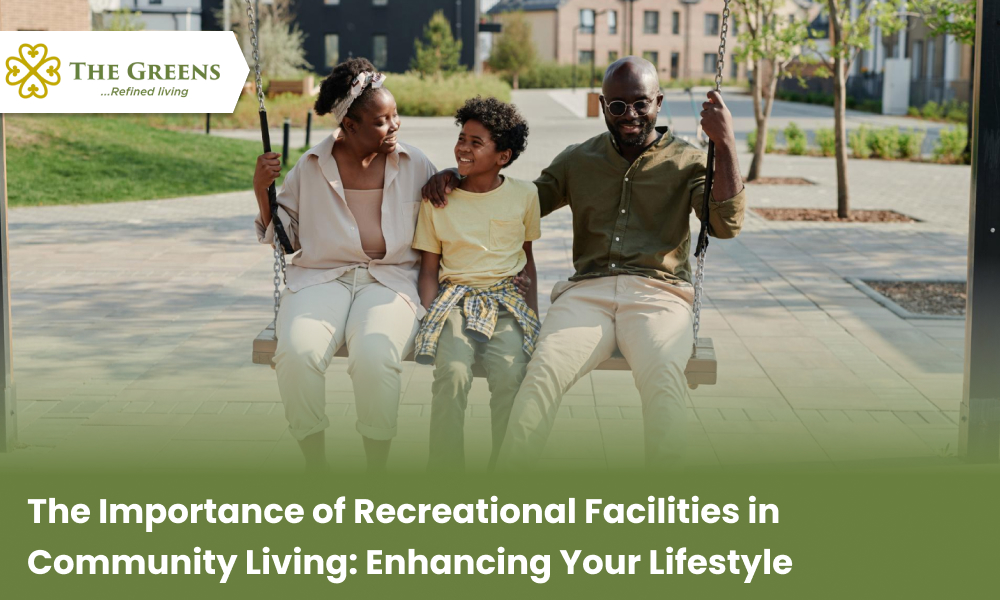Recreational facilities play a crucial role in enhancing the quality of life within a community. Whether it’s a state-of-the-art gym, a peaceful swimming pool, or a vibrant sports court, these amenities offer more than just a place to unwind—they contribute significantly to the overall well-being and sense of community among residents. In this article, we explore the importance of recreational facilities in community living, highlighting their numerous benefits and how they enhance the lifestyle of those who have access to them.
Why Recreational Facilities Matter in Community Living
Recreational facilities are essential components of any thriving community. They provide spaces where residents can engage in physical activities, socialize with neighbors, and enjoy leisure time with family and friends. In today’s fast-paced world, having access to these amenities close to home is more important than ever. It encourages a healthier lifestyle, fosters social connections, and enhances the overall appeal of the community.
1. Promoting Physical Health and Well-being
One of the most obvious benefits of recreational facilities is their impact on physical health. Regular exercise is crucial for maintaining a healthy lifestyle, and having access to a gym, sports courts, or swimming pool within your community makes it easier to stay active. These facilities provide opportunities for residents of all ages to engage in various forms of physical activity, from strength training and cardio workouts to swimming and playing sports.
Gyms and Fitness Centers: These facilities offer residents the convenience of exercising without leaving their community. Whether it’s lifting weights, running on a treadmill, or joining an aerobics class, having a gym nearby encourages regular exercise, which is vital for physical health.
Swimming Pools: Swimming is an excellent low-impact exercise that’s suitable for all age groups. A community pool offers a great way to stay fit, relax, and enjoy time with family.
Sports Courts: Facilities for basketball, tennis, or volleyball provide spaces for team sports, which are not only good for physical fitness but also for building teamwork and social connections.
2. Fostering Social Connections and Community Bonds
Recreational facilities serve as social hubs where residents can meet, interact, and build relationships. In a world where digital interactions often replace face-to-face communication, these spaces offer invaluable opportunities for community members to connect on a personal level.
Community Events: Recreational spaces often host community events, such as fitness classes, sports tournaments, or holiday celebrations. These events bring people together, fostering a sense of belonging and community pride.
Shared Spaces: Whether it’s a playground for kids, a clubhouse for social gatherings, or a park for picnics, these shared spaces encourage spontaneous interactions among residents, helping to create a tight-knit community.
3. Enhancing Mental Health and Reducing Stress
The presence of recreational facilities in a community also has a positive impact on mental health. Engaging in physical activities, spending time outdoors, and socializing with neighbors can significantly reduce stress levels and improve overall mental well-being.
Stress Relief: Exercise is a well-known stress reliever. Activities like swimming, jogging, or even taking a walk in a community park can help clear the mind and reduce anxiety.
Mental Stimulation: Participating in group activities or trying new sports can keep the mind active and engaged, which is especially beneficial for older adults.
4. Increasing Property Values and Community Appeal
Communities with well-maintained recreational facilities are often more attractive to potential homebuyers. These amenities add significant value to the community, making it a more desirable place to live.
Higher Property Values: Homes located in communities with extensive recreational amenities typically have higher property values. These facilities are viewed as added benefits that enhance the overall living experience.
Appeal to Families: Families, in particular, seek out communities with recreational amenities, as they offer safe and convenient places for children to play and adults to relax.
5. Supporting an Active and Balanced Lifestyle
Recreational facilities make it easier for residents to maintain an active and balanced lifestyle. By providing a variety of activities, from high-energy workouts to leisurely swimming, these amenities cater to different interests and fitness levels.
Diverse Activities: Whether you prefer a vigorous game of tennis, a refreshing swim, or a quiet walk in the park, recreational facilities offer something for everyone, promoting a well-rounded approach to health and fitness.
Convenience: The convenience of having these amenities within walking distance of your home eliminates the need to travel far for recreation, making it easier to incorporate physical activity into your daily routine.
Enhance Your Lifestyle with Recreational Facilities
Recreational facilities are more than just luxuries—they are essential components of a vibrant and healthy community. They promote physical health, foster social connections, enhance mental well-being, and add value to the community. By making these amenities accessible, communities create environments where residents can lead active, balanced, and fulfilling lives.
Are you interested in living in a community that values recreation and well-being? Explore the recreational amenities available at The Greens Clubhouse and discover how these facilities can enhance your lifestyle. Share your thoughts on the importance of recreational amenities in the comments below, and join us in creating a community where health and happiness thrive!


